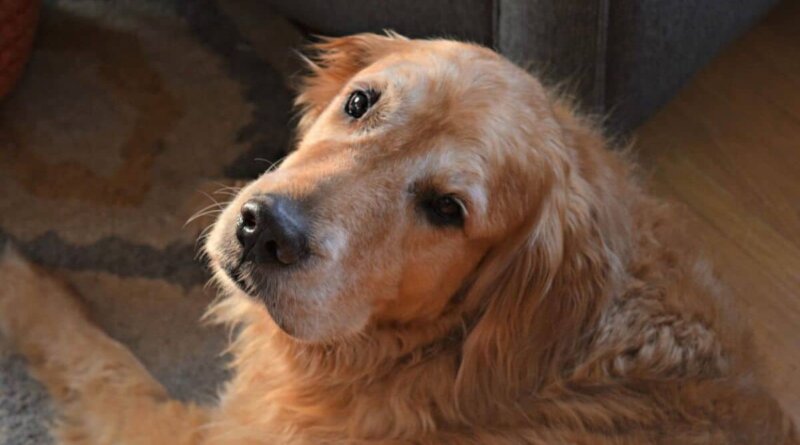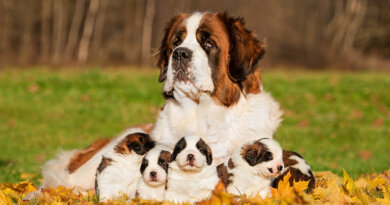Hip Dysplasia in Dogs: Your Questions Answered
This post may contain affiliate links. We may earn money or products from the companies mentioned in this post.
We’ve been lucky (or unlucky) with our senior dogs. Linus had advanced arthritis and began to have some minor issues with his hips. In his later years Stetson took a while to get up off the floor.
Both our two elder statesmen passed before they had major hip issues. As I said both fortunate and unfortunate.
However, we have been part seen hip dysplasia in dogs many times. Our family dog, a Border Collie mix, my brother’s German Shepherd mix, three of my aunties Great Pyrenees.
Today’s blog post covers Canine Hip Dysplasia (CHP) also referred to as Hip Dysplasia in Dogs.
UPDATE: This post was published on MyDogLikes (originally on Animal Bliss) on August 10th, 2020. We recently updated and republished here on PuppyInTraining.com.
DISCLAIMER: We are not veterinarians. If your dog is experiencing any health issues you should see your vet and get their expert opinion. This blog post is for entertainment purposes only.
Hip Dysplasia in Dogs
The hip joint consists of a “ball” on the femoral bone, and a “socket” on the hip bone.
Hip dysplasia in dogs, also known as Canine hip dysplasia (CHD), is when a dog’s hips do not develop normally and the ball does not fit snugly into the socket.
This condition creates undue stress on the joint.
Joint instability develops, causing damage to the cartilage, gradual destruction of the joint, pain and swelling. CHD most often causes arthritis in the hips.
Normal Canine Hip Joints
Normal Canine Hips, Joel Mills, Licensed under Creative Commons Attribution-Share Alike 3.0-2.5-2.0-1.0
Bilateral Canine Hip Dysplasia
Bilateral Hip Dysplasia, Joelmills. Licensed under Creative Commons Attribution-Share Alike 3.0
What Causes Hip Dysplasia in Dogs?
There are two theories about causes hip dysplasia in dogs:
- Genetic: the dog is born with it. This is the most popular theory. The disease is passed on by the parents, resulting in the puppies carrying the genes for CHD. Not all dogs with the gene show signs of the disease.
- Environmental: the puppy is too heavy, not exercised enough, or exercised too much during its initial growth period resulting in developmental problems.
What are the Symptoms of Canine Hip Dysplasia?
- walking with a limp
- difficulty getting up from a sitting position
- hops like a bunny when running
- reluctant to climb stairs
- a swaying gait
- pain in the hip
- has less energy and movement
However, these symptoms are usually not evident till the dog reaches middle age.
In extreme cases though, some dogs exhibit obvious hip problems as early as 5-6 months of age.
The only way to find out if your dog definitely has hip dysplasia is to get x-rayed by a vet.
My brother’s German Shepherd mix puppy had an early limp and was diagnosed with hip dysplasia at a young age.
It was hypothesized by his vet that the issue may have been from early neutering. Because he was a rescue puppy he was neutered at 4 weeks old.
How is Canine Hip Dysplasia Diagnosed?
Diagnosis of the hip dysplasia in dogs is done with x-rays, which can tell you how bad the condition is, and what treatment is needed.
X-rays taken again at a later date can also gauge the progression of the disease in order to adjust treatment, if necessary.
What is the Treatment for Canine Hip Dysplasia?
There are two options for treatment: non-surgical management or surgery.
Non-surgical methods may include the use of drugs to relieve pain and inflammation, supplements, acupuncture, physical therapy, chiropractic care, exercise, and weight management.
If non-surgical management is not enough, surgery may be needed, although most people see this as a last resort.
Surgery can be very effective as it corrects the underlying cause of hip pain which is a malformed joint. There are two different ways of doing the surgery.
One is prophylactic surgery done to prevent the progression of arthritis.
The other is therapeutic surgery which aims to treat already arthritic hips.
You will need to talk to your Vet about what options are best for your dog.
They will be able to give you recommendations for treatment and will be able to give you the details of the surgery if needed.
There are several surgeries available but it is beyond the scope of this article to go into detail here.
Can Canine Hip Dysplasia be Prevented?
Don’t overfeed your dog, especially during the growing phase.
Excessive weight, or rapid weight gain, creates more stress on the joints, causing problems.
If your dog has the CHD genes, this can slow down the process considerably.
Don’t over-exercise your dog. Don’t let it jump up and down from heights.
Since hip dysplasia in dogs is genetic, it is important to prevent further breeding of the line.
Breed stock may have the gene for CHD and not show any signs.
If your dog has canine hip dysplasia, she should not be bred.
If you are buying a dog, look for a reputable breeder. If one parent dog has hip dysplasia, the risk of it occurring in the litter is doubled.
Good breeders take care to prevent this situation from occurring.
The pedigrees of dogs can be checked to see whether they have been certified as normal by the Orthopedic Foundation For Animals (OFA) in the US.
Other organizations that check for markers of hip normalcy in dogs are PennHip and the GDC (Genetic Disease Control in Animals).
Large breed dogs have a greater chance of developing hip dysplasia, and prospective owners would be wise to take this precaution.
Does your dog suffer from hip dysplasia?
Do you have any advice?
Save To Pinterest
Top Picks For Our Puppies
- BEST PUPPY TOY
We Like: Calmeroos Puppy Toy w/ Heartbeat and Heat Packs – Perfect for new puppies. Helps ease anxiety in their new home. - BEST DOG CHEW
We Like: Mighty Paw Naturals Bully Sticks – All of our puppies love to bite, nip, and chew. We love using Bully Sticks to help divert these unwanted behaviors. - BEST DOG TREATS
We Like: Crazy Dog Train-Me Treats – We use these as our high-value treats for our guide dog puppies. - BEST FRESH DOG FOOD
We Like: The Farmer’s Dog – A couple months ago we started feeding Raven fresh dog food and she loves it! Get 50% off your first order of The Farmer’s Dog.
Check out more of our favorites on our New Puppy Checklist.




